I want to post a few additional photos from our road trip in the southeastern states.

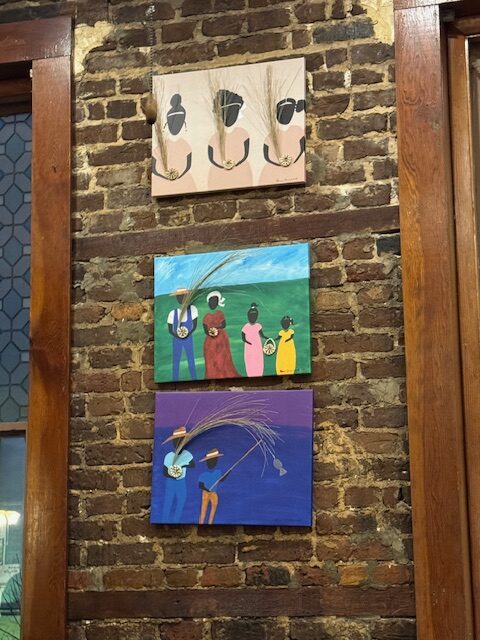


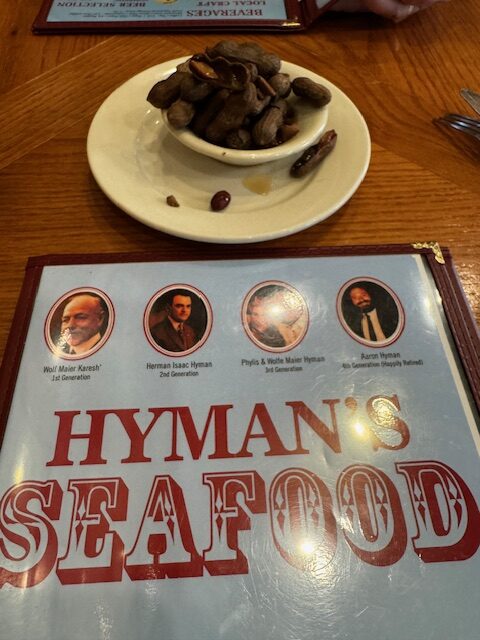
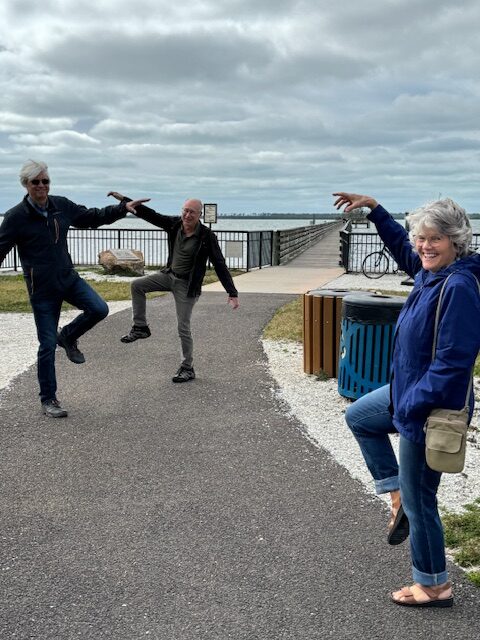


I want to post a few additional photos from our road trip in the southeastern states.








I am reading a good book…savoring it is more like it: Braiding Sweetgrass. A few months ago, I ordered the book from the Northfield Library, and by mistake, I got the book on CD. I was immediately captivated by it and hadn’t finished listening to by the time it was due, so I ordered it again, both the CD’s and the book. I have enjoyed reading the book and listening to the audio version.
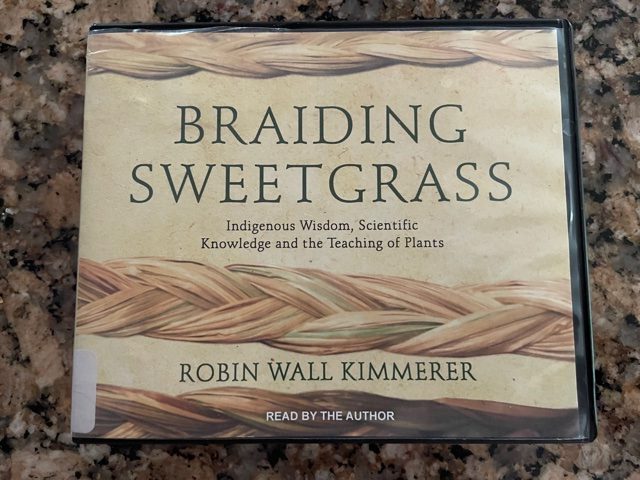
The book, Braiding Sweetgrass, is written by Robin Wall Kimmerer; a mother, scientist, decorated professor and enrolled member of the Citizen Potawatomi Nation.
The book is described as “A hymn of love to the world” by Elizabeth Gilbert. It is a book on “Indigenous Wisdom, Scientific Knowledge and the Teachings of Plants.”
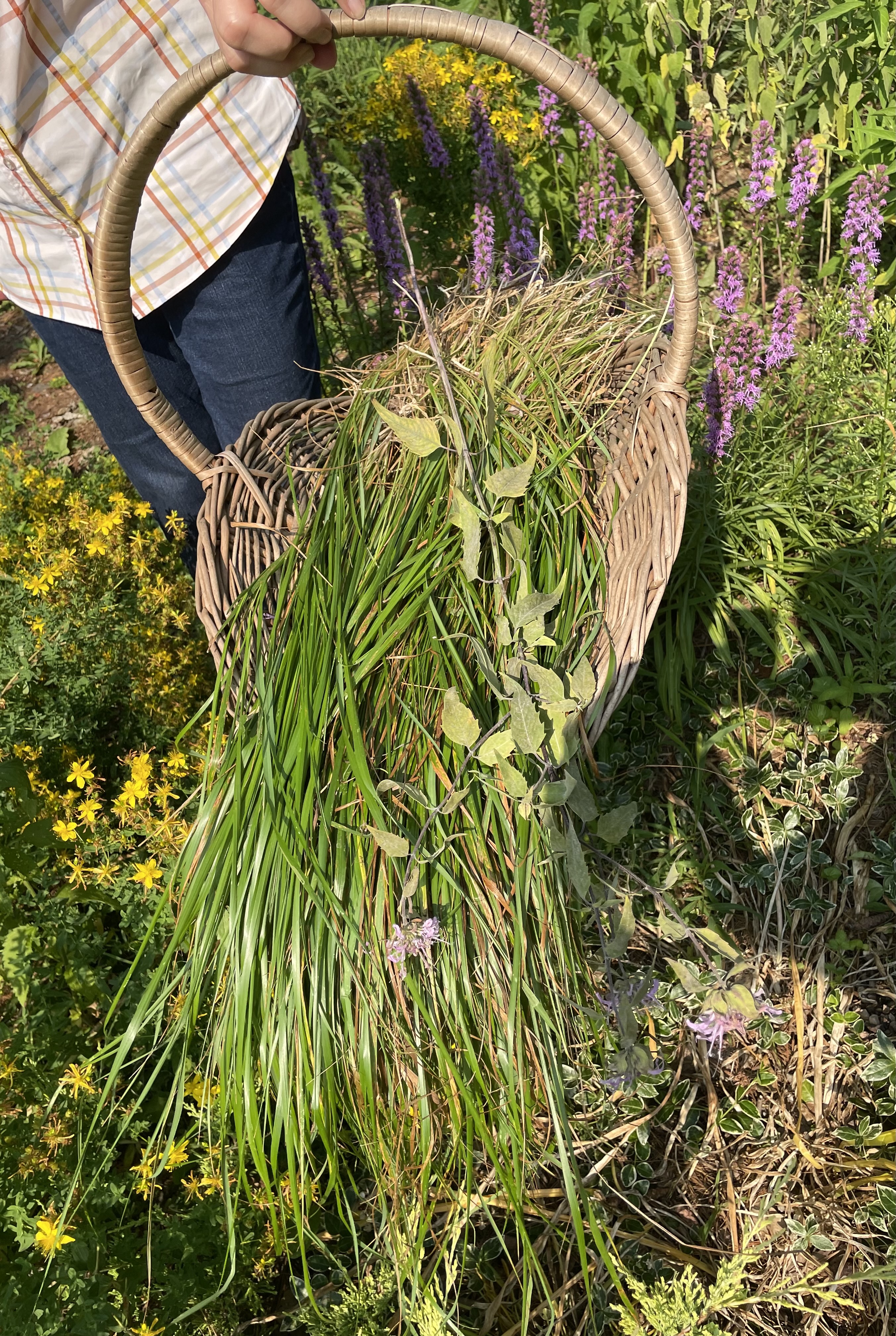
Robin Wall Kimmerer’s vivid descriptions, explanations and metaphors delight the reader. It is a book for nature lovers and anyone interested in learning about the indigenous ways, and teachings from the land and plants. It’s fascinating.
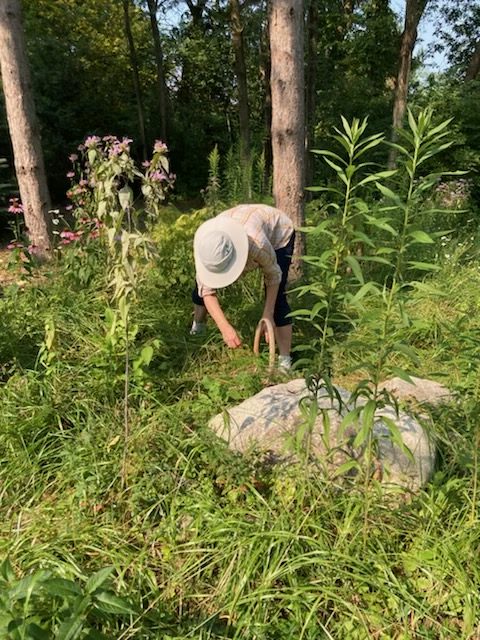
The recurring theme is sweetgrass, Mother Earth’s hair, one of the four sacred grasses for the indigenous people (sweetgrass, sage, tobacco, cedar). Braiding sweetgrass is a tradition, and they believe having braids in the home, or given as gifts, brings positivity and goodwill and kindness…and wards off negativity. Traditionalists also “smudge” the braids, that is burn them, in ceremonies.
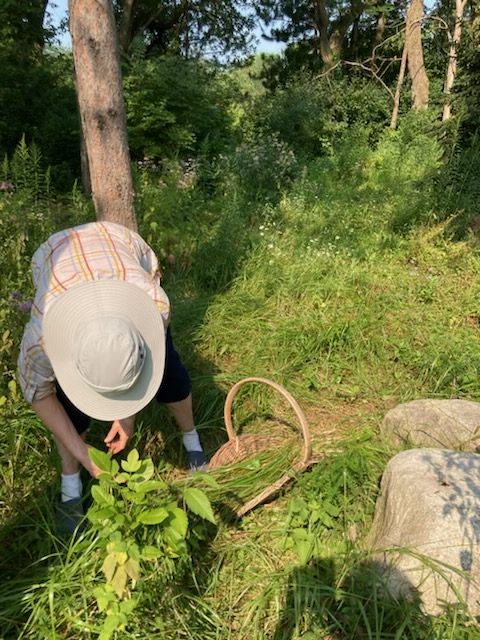
While reading through the book I was inspired to braid sweetgrass. I was talking with a friend, an herbalist (her website is https://www.cannonvalleyherbals.com – check out her website for a recent article on sweetgrass under the “Blog” section) and she told me she had sweetgrass growing in her gardens. She said I was welcome to come and pick some sweetgrass for braiding. So I did.

She showed me what sweetgrass looked like (always a good first step!), then how to pull it out by the roots. It has a light vanilla fragrance…and if you taste the root you can taste sweetness. She left me alone to pull a basketful of sweet grass. Afterwards, she took a minute to show me how she has braided sweetgrass. I took my good fortune home and started in.
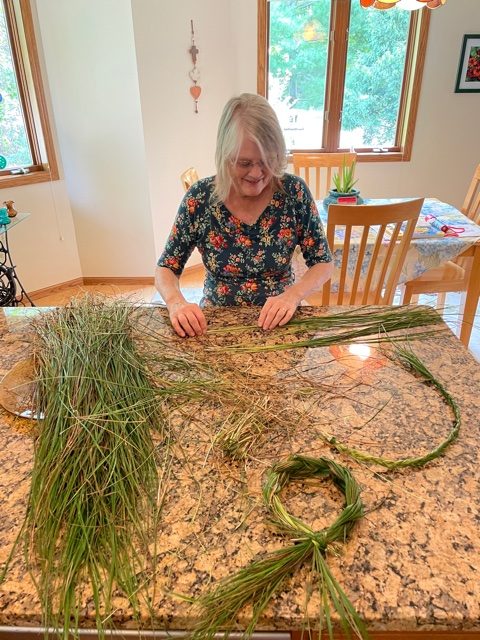
I had great fun braiding the grasses, using large clumps, and strands of seven in each clump. The scent is pleasant and subtle, and the results of the braids were rewarding.
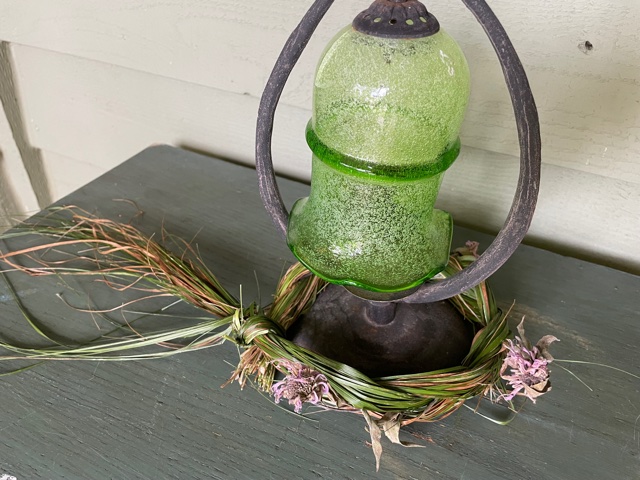

I recommend this book. It is a fascinating read.